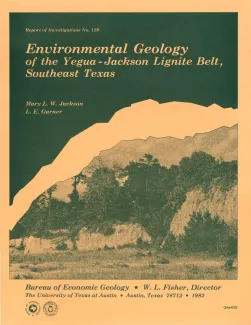
Publication Details
Geolocation:
Get the Publication
$42.50
Abstract/Description:
Environmental geologic maps of the Texas lignite belt were prepared in response to renewed production of lignite in Texas and enactment of Federal and State laws governing coal and lignite surface mining. The map area of this report encompasses the outcrop of the Yegua Formation and Jackson Group from south-central Texas to the Texas-Louisiana border. Yegua sediments are fluvial in outcrop, and deltaic in the deeper subsurface. Jackson deposits are predominantly of deltaic origin. Mapping involved interpretation of black-and-white, large-scale aerial photographs and extensive field work. Each of the 32 map units is defined in terms of substrate, soil, geomorphology, geologic process, vegetation, and land use. Additional information presented on the maps includes active and abandoned lignite mines and lignite resource blocks mapped by Kaiser and others (1980). Floodprone areas vegetation assemblages, and soil types presented on the maps provide basic data useful in mine planning. Correlation of sand outcrops with subsurface sand maps helps locate hydrologically sensitive areas that need careful consideration during lignite development. Environmental geologic maps can also aid public and private agencies in land use planning and land resource management.